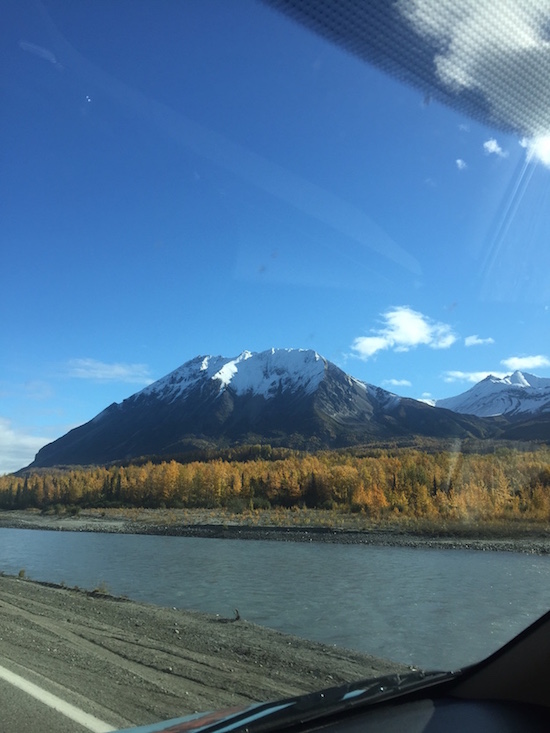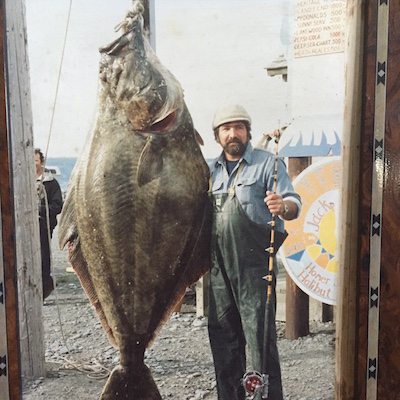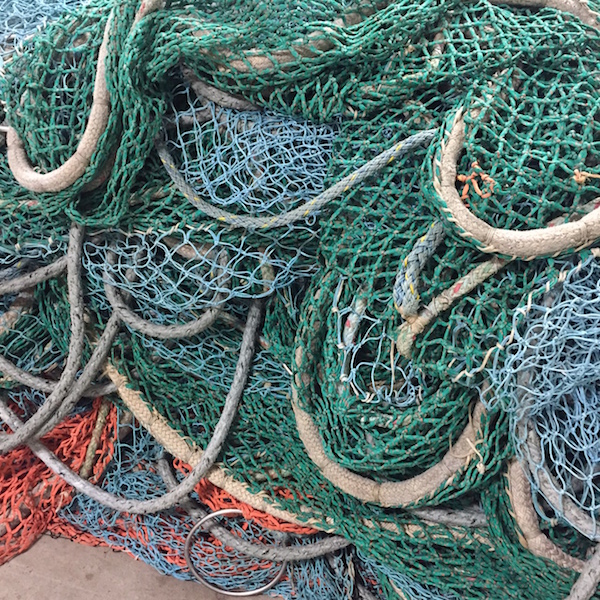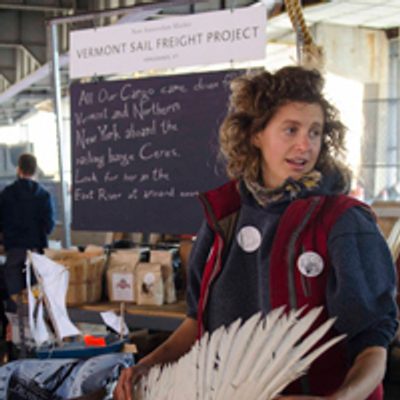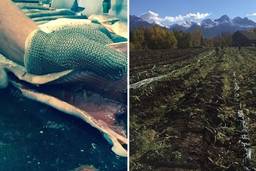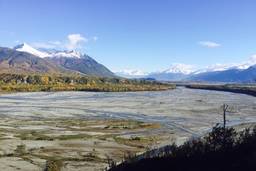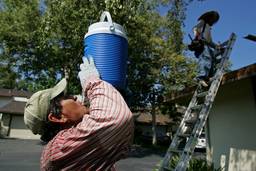A Farm Organizer Visits Fish Country: An Alaska Journal, Part I
Severine Von Tscharner Fleming
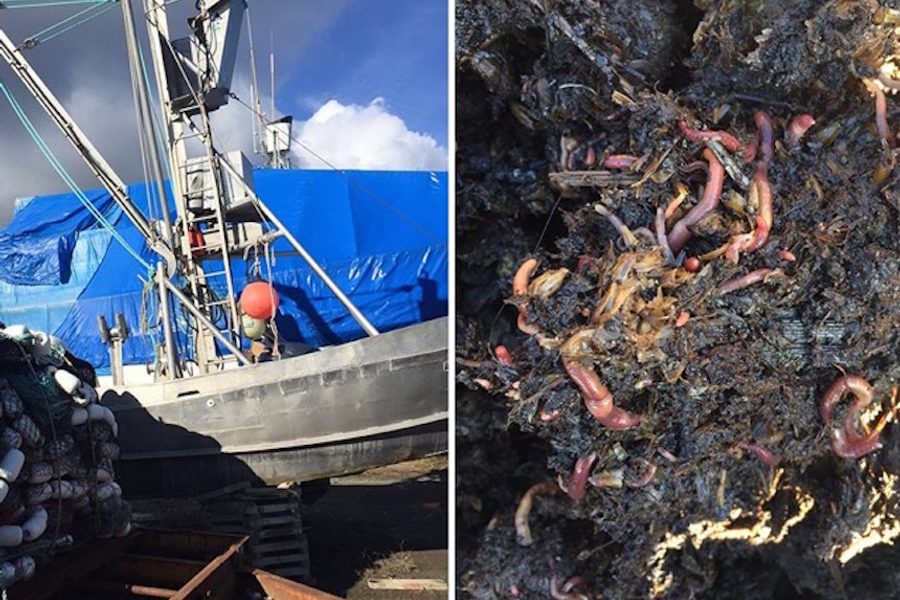
With record runs of shining, silver-flanked salmon, Alaska represents the last great food commons in the United States. This “sustainable fishery” surges in yearly runs, when millions of strong, red-fleshed fish race upriver to spawn in clean water, under the reflection of endless toothy rows of white-capped mountains. For years I’ve been aching to go to Alaska.
The invitation came last spring, from the Alaska Marine Conservation Council and the Alaska Food Policy Council. They’d seen me speak at the BALLE (Business Alliance for Local Living Economies) conference about my work supporting cultural infrastructure for young farmers in the lower 48, and wanted me to come speak with the young fisherman — the next generation of marine stewards.
I’ve spent the last 10 years hip deep in the young farmers movement, with the mission to “support, promote and recruit” the incoming generation of organic agrarians. I’m a circuit rider, organizer, grass-roots documentarian and overall celebrant of the young farmers movement; director of Greenhorns, an 8-year-old grassroots organization; founding board member of Farm Hack, an appropriate tech platform; and co-founder of the National Young Farmers Coalition.
Prior to my Alaskan adventure, I was up in northernmost Maine — a part of the lower 48 that feels almost as remote as Alaska — filming an upcoming episode of Our Land, the Greenhorns’ new film series. We were visiting the family home and vegetable-freezing facility of Marada Cook and her sister Leah, aka Northern Girl. Their family has been shipping food out of and around Maine for the past decade with their company Crown of Maine Organic Coop, and have just begun their adventure in “valued added” root vegetables.
As I left Presque Isle, Maine for Anchorage, Marada (core partner on our summerlong Maine Sail Freight Adventure) laughingly teased, “Bring back a bush pilot from Alaska.”
Man-hunting was low on the list. I had (and still have) questions for Alaska:
- What can the farming community learn from the highly managed, and highly abundant commons of Alaska? Are these lessons applicable to land?
- What do young agrarians have to learn from the governance and politics of a wild fishery?
- What does a wild fishery have to learn from the cultural activities of agrarian organizers?
The following articles summarize my insights into these questions while documenting this once-in-a-lifetime chance to study community relations of the wild fish commons — the aspirations and network shape of a frontier local food scene whose highest aim is to avoid further plunder of their magnificent natural wealth.
A view from the car. (Photo: Severine von Tscharner Fleming)
Riding it down
First, a look at theories of management.
In 1968, Garrett Hardin described the phenomenon of the Tragedy of the Commons—in which graziers (cow owners), each pursuing their own self-interest, over-exploit a shared pasturage, or “commons” — leading to a collapse of the resource.
The basic lesson was: only private property can protect resources from depletion and ruin. This is the view of the Koch-brothers funded Property and Environment Research Center (PERC)— which currently questions the “efficacy” of our national parks and public lands — an interpretation that affirms, when it comes to conservation, “the market” is the only rational system for administering land.
Beginning in 1604, the English empire rationalized enclosure of commons lands based on this same logic. Efficient farming meant keeping sheep on private property, as opposed to shared grazing areas. Obviously, this is a lesson that applies just as much to aquatic systems as terrestrial ones — water and land being the two faces of nature’s economy.
But as it turns out, today both our private property and conventional farming regimes — with their rearrangement of natural systems, waterways and landscape forms; with mining, degradation and genetic selection — are in crisis. Most who study the issue recognize it cannot continue to sustain our species unchanged.
So why would we try to apply private property logic to the ocean?
A different perspective
Elinor Ostrum, winner of the 2009 Nobel Prize in Economics, carried a different message in her seminal work, Governing the Commons. Her conclusions — after a career spent documenting common-resource based economies and societies around the world — were far less compatible with economized notions of individual self-interest and market-based solutions to which we’ve been unwittingly acculturated. Unlike Hardin’s example, which employed a concocted metaphor to prove a point, her work was based on actual study and documentation of grazers and fisherpeople around the world who had managed (over centuries) to sustain the often delicate and fluctuating ecosystems that supported them.
She was interested to learn how they modulated individual self-interest, opportunism, free-loading, greed and the impacts of technology on resource use. She studied Alpine pasture systems in Switzerland, irrigation ditches, communities in Spain and the Philippines (to name a few), and discovered the “bottom up” rules that govern both human and nature’s economies. These rules (below) and practices were highly specific, but as systems (not exclusively regulated by only the market, or only the state) they shared eight characteristics:
- Define clear group boundaries.
- Match the rules that govern use of common goods to local needs and conditions.
- Ensure that those affected by the rules can participate in modifying the rules.
- Make sure the rule-making rights of community members are respected by outside authorities.
- Develop a system, carried out by community members, for monitoring each member’s behavior.
- Use graduated sanctions for rule violators.
- Provide accessible, low-cost means for dispute resolution.
- Build responsibility for governing the common resource in nested tiers from the lowest level up to the entire interconnected system.
Her conclusion, after a career spent observing system dynamics, was that neither the state nor the market alone could result in the kind of adaptive, fluctuating governance that these systems required for sustained health.
What this infers is that direct, stakeholder/practitioner engagement with governance systems is crucial to the sustained health of ecosystems. In other words, the regulation of the environment cannot be left only to the state, nor only to corporations.
Ostrum had wonderful words to describe the systems that did work — features of subsidiarity, a polyarchy and polycentric governance with multiple agents of control, and people locally embedded and in direct contact with the natural system itself.
My study of Ostrum, prior to my trip, had been focused on issues of land access as it relates to responsible farming and how community ownership of crucial farmland resources can be structured to maximize stewardship by constraining “use rights.” (See the Agrarian Trust) But these lessons apply equally to rangeland managers, farmers and fisher people. Perhaps looking across contexts at one another might help us see our relative predicaments.
A framed portrait of a Homer man and his halibut. (Photo: Severine von Tscharner Fleming)
The Alaskan commons
Turns out the last “sustainable fishery” in the world, is the last frontier we’ve got— the wildest of our “common pool” resources and a food source that approaches the abundance of the buffalo. Unlike many commons, it seems to have avoided tragedy because of massive structural effort. Unlike successful commons studied by Elinor Ostrum, this commons is administrated by the state, specifically the Alaska Department of Fish and Game and the Pacific Fishery Management Council, as part of the Magnuson-Stevens Act that has mandated “sustainable yield” management of fisheries since 1976.
Thus far, the wild Alaska salmon fishery has been able (through biological management programs paid for in large-part by state oil) to thwart the trend towards degradation that we’ve seen in so many other ecosystems and so many other fisheries.
[If you like what you are reading, help us spread the word. “Like” Rural America In These Times on Facebook. Click on the “Like Page” button below the wolf on the upper right of your screen.]
After a breathtaking journey down fjords and giant river valleys, I arrived in Homer for the First Annual Homer Halibut Festival. Held on September 19, my job was to give a talk to young fishermen and transmit “lessons from the young farmer movement.” The Alaska Marine Conservation Council, and a growing international coalition of fishworkers, community fisheries and community supported fisher people believe that a fleet of smaller, locally-owned boats makes for a sustainable place-based economy comprised of those who will defend the water that feeds from pollution, mining and overfishing. What a pleasure to be hosted by organizers with a basement full of frozen fish, a practical approach and who happen to be expert junket-coordinators. (Here is a link to some of the local press attention my visit received.)
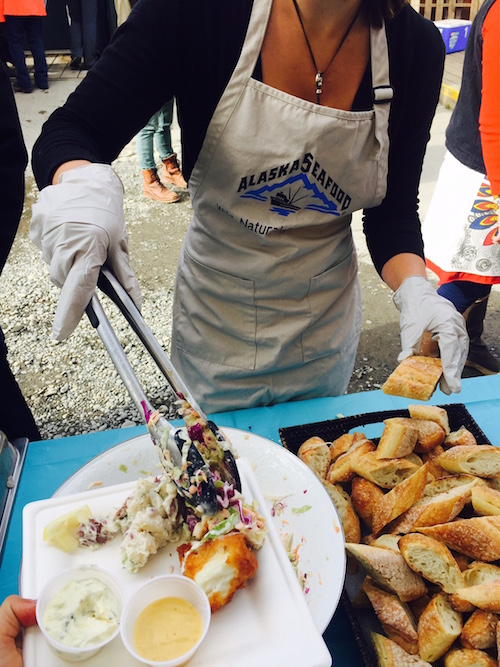
A volunteer serves lunch at the First Annual Homer Hallibut Festival. (Photo: Severine von Tscharner Fleming)
Under the sea
For many terrestrials, and certainly for me, the ocean and fisheries are a foreign place. We cannot see into the sea and don’t know much at all about what goes on there, except perhaps familiarity with the blanket-term “over-fishing.” Young agrarians of the rangeland know well that a blanket critique — that the Bureau of Land Management and Forest Service’s policies lead to “over-grazing,” for example — is not enough. Indeed after decades of handing over mining, drilling, grazing and mineral rights on public lands, there’s a flank of the environmental movement calling for privatization of over 400 million acres of public lands. Another flank, the Rainforest Action Network, is calling for a moratorium on the sale of mineral rights on public lands.
We need to look more closely. We need to survey what we already know. And we need to build from there.
Some of us have followed the campaigns against factory fish—the Costco victory against GMO salmon, GMO soy oil being sold as pelletized fish food and the pollution caused by fish farms. And we have heard hype about aquaculture projects and been confounded by this glamorization of international fish farm development projects. We use kelp supplements for our dairy animals and soil mix, but don’t know much about the controversy behind them. For the most part, we aren’t much connected as producers with fisher people whose fish-meal we farmers buy. (I hope this article may woo a few young farmers to study across the boundary of the seashore and help us discover our common causes.)
So, what’s the difference between a well managed and a poorly managed commons?
Success and failure
Farmers, farmland, food communities and economies share much in common with fishermen and fisheries. We share an ecosystem. We share the water cycle. And we share an economic relationship with hydrology, geology, topography, and the deposition of silts and nutrients over eons. Farmers and fishers face many similar dilemmas, the market and climate not least among them. Where incoming farmers struggle with access to land and capital, fishers face a graying of the fleet and high barriers for new entrants into a common pool resource with declining natural capital. Recent fishery collapses have seen a contraction in the fishing fleet, consolidation, foreign investment and a new kind of share-cropping.
From a governance perspective, domesticated lands have a more direct human feedback loop than the wild ocean — and yet, many of the recent “privatization rules” in fisheries apply “land logic” to a wild, underwater system far beyond our comprehension. (But even then, look how little we curb our poor management of the land, even when its consequences are staring us in the face — over-grazing, soil erosion, flooding, soil compaction, etc.) Imagine what habitat fragmentation happens below the surface of the ocean, in the foreign aquatic. Who will speak for the fish? As my new favorite author, Paul Molyneaux, says, fish have “over 90 percent infant mortality, 100 percent illiteracy, zero healthcare and no property rights!”
Young fisherman, old homesteaders
As it stands, the fleet is graying. According to an Alaska Sea Grant report, the average age of fisherman is similar to that of farmers, hovering around 65. Similar to the quandary faced by young farmers looking for affordable farmland, young fishermen struggle to “work themselves into ownership” in the way that was possible in the 1970s and 1980s. Organic farming’s “back to the landers” and the early entrants into the Alaskan Fishery found cheap territory in which to work. Since those heydays, like the price of land, fishing permits, boats, fuel, nets and docking fees have all risen without a corresponding rise in the price of the actual fish caught or food grown.
A pile of (expensive) fishing nets. (Photo: Severine von Tscharner Fleming)
Like young farmers, young fishermen point to the unjustified inflation in the prices of fishing permits and absentee permit owners taking ever larger cuts of the fisheries quotas. They note that these create the incentive to fish a greater and greater volume, which drives the prices still lower. In a protected fishery, there are only so many days, or pounds, that are permissible. But riding hard up into regulations set by biologists and state regulators is no way to grow a “conservation-minded fisher generation.” Redefining what subsistence fishing means to include not just food, but income generation as well is one option. This, however, this would be very risky.
In the real word, these price quandaries drive fishermen and aspiring fisher-people to a patchwork of income streams. Strategies for farmers include leasing, direct marketing, off-farm income and institutional partnerships. Strategies for young fisherman include off-fish season income, direct and value-added marketing, diversifying permits, and working other people’s boats and fishing rights. Though there are exceptions to the rule, for structural reasons neither of these options offer the prospect of a decent livelihood as the generational skew clearly indicates.
Older fisherman, like older farmers, may scratch their heads and wonder why the young greenhorns aren’t willing to bootstrap in, but there is no shortage of young blood milling around the dock or willing to work as deckhands — they just aren’t making it as vessel owners and captains.
A legislator and a fisheries trust
In attendance at my Halibut Festival talk was a diminutive, clean-clothed character in wire-rimmed glasses. He didn’t look like a fisherman, but was the most obviously attentive and incisive voice regarding fishery policy.
Turns out he, Jonathan Kreiss-Tomkins, is a 26-year-old state rep from Sitka who dropped out of Yale to return home and get involved in local government. His primary preoccupation is the health of the fishery and the community it supports. He’s involved in a scheme worth looking at— a scheme that bypasses many of the issues associated with privatized quota, consolidation and absentee ownership. It’s called the Sustainable Fisheries Trust.
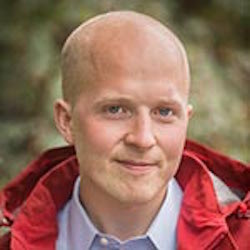
Jonathan Kreiss-Tomkins, a Democrat, was elected to the Alaska House of Representatives in 2012. (Photo: akdemocrats.org)
Similar to a community land trust, where farmland is held in community ownership and its “use rights” are leased by farmers, Sustainable Fisheries Trust shares the logic of commons-based governance. In the case of the fishery, it is the quota and the right to fish that is owned as a community. This quota is leased exclusively to local, young, new entrant or conservation-minded fisher people who can bring the fish and wealth created ashore to the places closest to the resource. In this way too, the economic power of the fish stays firmly situated in local politics and in the hands of those political constituents who share the home geography with its habitat.
(To read An Alaska Journal Part II, click here)
